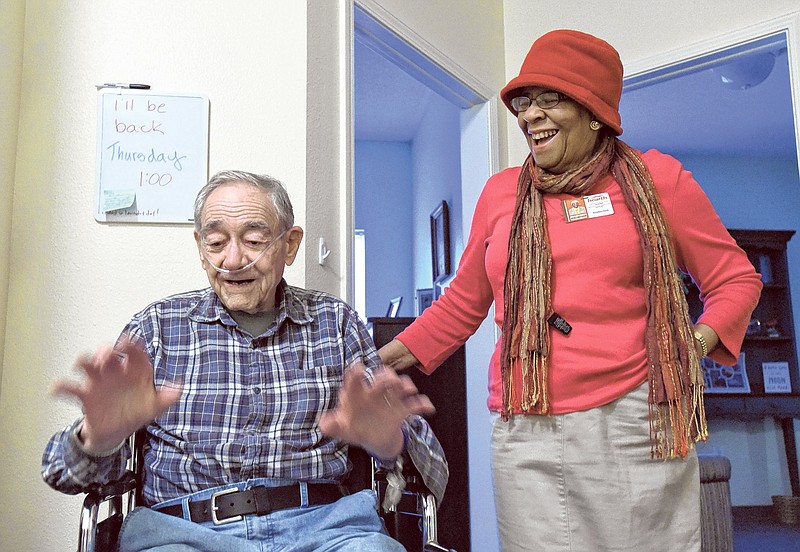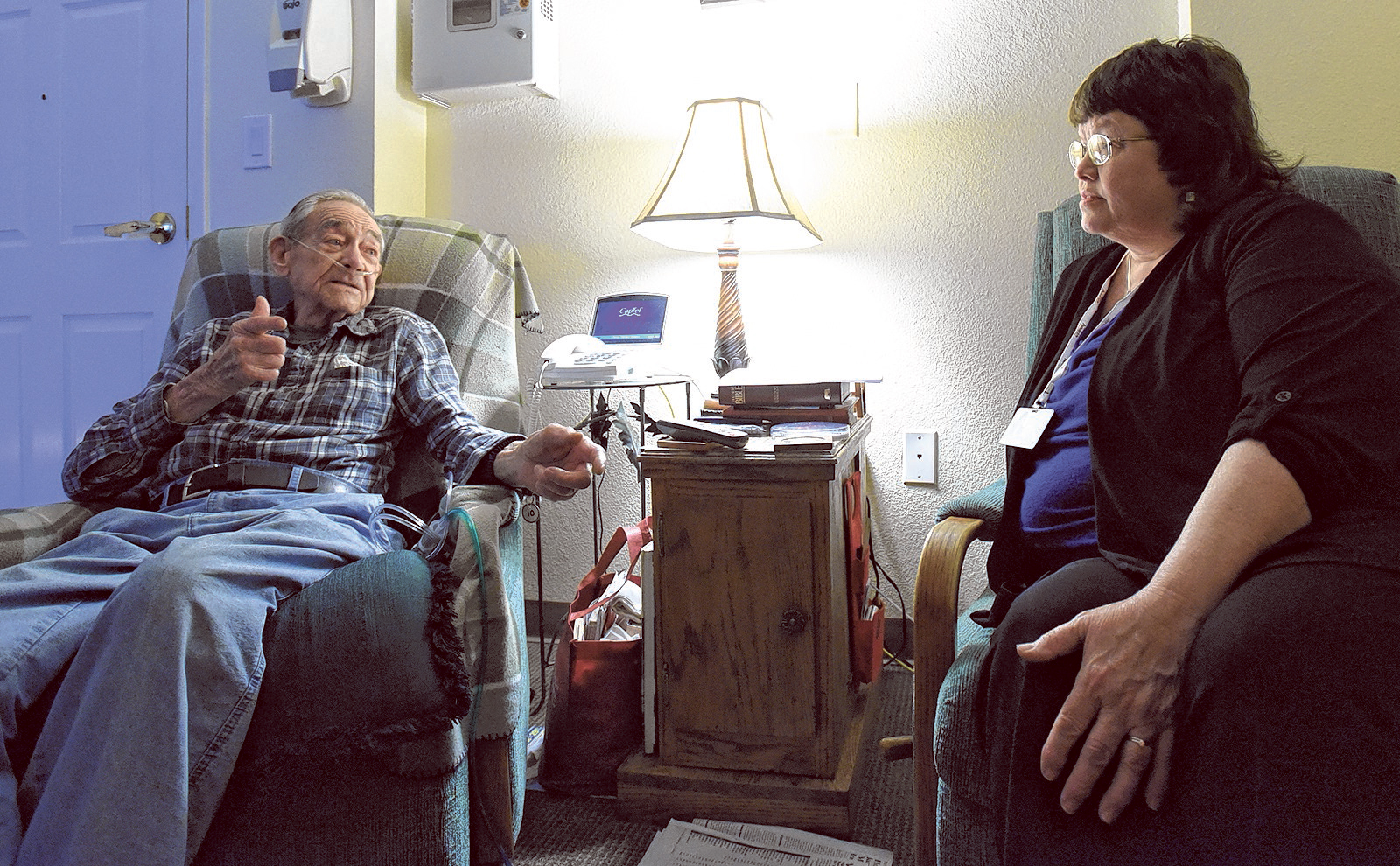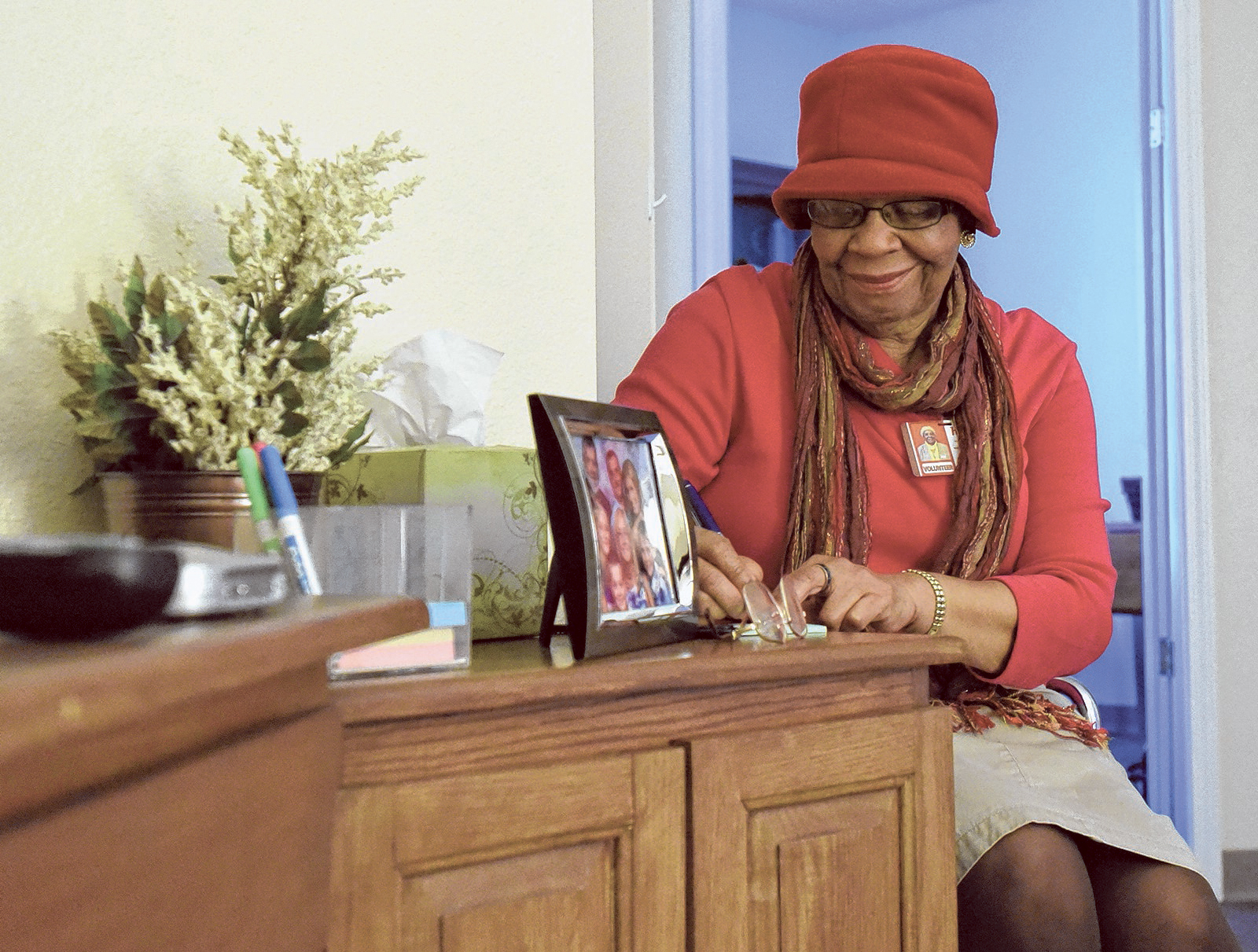Fast facts In 2013:
An estimated 1.5-1.6 million people received hospice-care services in America. The majority of patient care by hospice services is provided in the patient's home. More than half of hospice patients were female (54.7 percent). Nearly 84 percent of hospice patients were 65 and older; 41.2 percent were over 85 or older. The top four primary diagnoses for patients admitted to hospice care were: cancer, 36.5 percent; dementia, 15.2 percent; heart disease, 13.4 percent; lung disease, 9.9 percent.Source: National Hospice and Palliative Care Organization
Donna Pierce's aunt was dying of cancer. There was no chance of recovery.
"We had Hearth Hospice with my aunt for the last two weeks of her life," says Pierce of Fort Oglethorpe, Ga. "Once she agreed to let them come, she was a different lady. She agreed with everything they suggested and enjoyed their visits.
"Once she went into a coma, they treated her with as much dignity as they did before. Her passing was at 2 a.m., and the nurse was there within 15 minutes, and she handled everything from contacting the funeral home to cleaning up her bedroom.
"They were wonderful with us, too, and even now, seven months after her death, they still correspond with us regularly."
From medical staff to social workers to volunteers, being part of hospice care is a tough job. There's no getting around the fact that the patients - people with whom you may be forming a tight bond - are dying, and the best you can do is try to make their last few months, weeks, hours, days a bit more comfortable, a bit less frightening.
Bad enough for those who are employed by hospice care companies, but what about those who work in hospice for no pay; what about the volunteers?
"It most definitely takes a special person to do hospice care," says the Rev. Denise Caldwell, head of volunteer services and chaplain at Hearth Hospice. Part of her job is to speak to local churches, civic groups, colleges and other organizations in an ongoing effort to recruit volunteers.
"It is hard to find volunteers because people connect hospice with dying and, though it is end-of-life care, it's so much more," she says. "We even need volunteers to help out with office work, bereavement mailing, etc. Volunteers aren't required to go into patients' homes but, of course, we need that, too."
But volunteers also need to know that working with hospice is not an unrelenting world of bleakness and despair, says Garry Mac, chief marketing/development officer for Hospice of Chattanooga.
"From a distance you might think hospice volunteering could be depressing, but people find just the opposite," he says. "Not dismissing other volunteer options, but it is a special person who raises their hand to volunteer in hospice. Our volunteers say the experience is a bigger blessing for them than, maybe, for the patient."
All alone
Jenny Mills, volunteer coordinator for Caris Healthcare, a hospice service in Chattanooga, says there is a "dire need for volunteers."
"There're so many people who need their help," she says. "There are clients who are alone - no family or friends. Our volunteer will hold their hands until their last breath. Nobody deserves to die alone. We need volunteers to be with these clients and to comfort them in the end.
"I think most people would be surprised to know how many die alone," she says. "It's a sad situation. We have staff, of course, who take care of patients but, depending on the needs of other patients, there are instances when a client is alone for a short time. That's what we never want to happen. That's one of the instances when we need to be able to call up a volunteer."
Volunteers do not offer any kind of medical care, Mills says. "All you have to do is enjoy the experience of having one-on-one time with the patient."
A Baptist minister, Caldwell acknowledges that volunteering with end-of-life patients does take a toll on some. But for volunteers, there are ways to alleviate some of the stress.
"You don't have to do it every day, every week or even every month," she says. "We'll take whatever it is you offer. We will take as much time as you can give, which is typically, two or three days a month. Some volunteer to be on call for emergencies."
"We even have a team who only wants to build ramps for patients who are now using a wheelchair," Mac says.
Growing need
When the hospice movement in America began around 40 years ago, it was "totally volunteer-driven," Mac says.
"In the '80s, when President Ronald Reagan made hospice care a Medicare benefit, the law he signed, wisely, required at least 5 percent of patient care continue to be delivered by volunteers. We like that because it preserves the spirit of the core reason for the hospice movement."
The number of hospice programs nationwide has continually increased over the last four decades, according to the National Hospice and Palliative Care Organization. Since the beginning of hospice in 1974, the number of programs has grown to nearly 5,800 in 2013, according to the group. In 2013, "355,000 hospice volunteers provided 16 million hours of service," the organization notes on its website.
Caldwell says she witnessed the benefits of hospice firsthand when her late mother-in-law was under its care years ago.
"I saw what all the staff and volunteers do for your loved one and for the family," she says.
Nanette Hawkins, of Fort Oglethorpe, Ga., says that, even though hospice services weren't utilized until two days before her husband died last year, the comfort they offered was immeasurable.
"To have Hospice of Chattanooga take care of his end time at home and after he passed by calling the funeral home and signing the death certificate meant the world to me," Hawkins says. "I would recommend this to anyone with a family member with a terminal illness."
The application process for hospice volunteers includes background checks and drug tests, Caldwell says, and there's no stereotypical hospice volunteer.
"We have a retired nurse, a computer programmer, a truck driver and more," she says. "We try to match the volunteer's personality and/or experience with that of a client. We try to find a good match."
And the need for volunteers never stops, says Mills of Caris Healthcare.
"We have so many hospice patients in need of a volunteer to just come out and be their friend, read the newspaper or hold their hand," she says. "These patients have been told they are terminally ill and, sadly, some have have no one to help provide comfort and companionship in their final days.
"We live in a self-absorbed world, but when you work in a hospice setting, you become more aware of your environment, and it gives you a better depth on having compassion for other people and on life," she says.
Caldwell calls it "a privilege" to help patients who come to hospice in the waning days of their lives.
"It's an honor they they allow us in their lives, and I don't treat it lightly. It's a crucial time in their lives to offer them comfort and friendship."
Contact Karen Nazor Hill at khill@timesfreepress.com or 423-757-6396.


